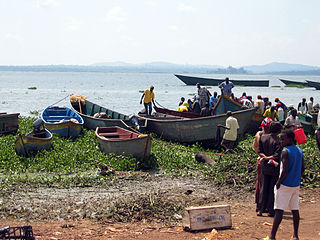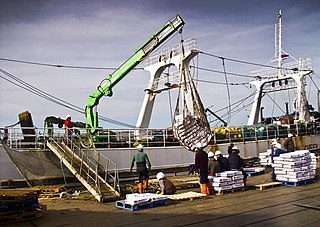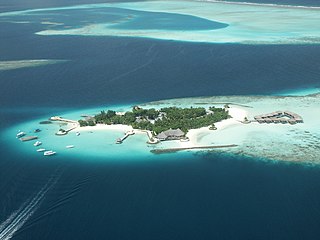 W
WLake Victoria supports Africa's largest inland fishery, with the majority of the catch being the invasive Nile perch, introduced in the Lake in the 1950s.
 W
WThe fishing industry in Brunei is one of the largest contributors of the country's revenue. Fishing is a major source of protein in the diets of the Brunei people. The coastal location on the island of Borneo makes it an ideal location for commercial and subsistence fishing.
 W
WFishing in Egypt includes every form of fishing as a hobby or professional nowadays. In Egypt, fishing is really developed and the country is considered one of the best fishing destinations in the world.
 W
WEthiopia's fisheries are entirely freshwater, in its many lakes, rivers, and reservoirs, as it has no marine coastline. Fishing contributed less than 1 percent of the gross domestic product in 1987. A study reported that 15,389 tonnes were caught in 2001, only 30% of an estimated potential of 51,481 tonnes.
 W
WFishing in the Falkland Islands contributes to the local economy, representing one of its biggest exports. Fish species range from golden sea tench to the rare triple tail shark. The official body responsible for the sustainable development of fisheries in the Falklands is the Falkland Islands Fisheries Department (FIS), established in 1987, It is reported that during 2013 the Loligo fishery had the best results.
 W
WFishing within the Bailiwick of Guernsey is common place. The bailiwick is made up of several islands in the Channel Islands, namely.
 W
WFishing in Israel is a branch of the Israeli economy with historical significance. The three main natural fishing zones are the Mediterranean Sea, the Gulf of Aqaba, and the Kinneret. A fourth area that was once historically significant, Lake Hula, no longer exists, as it was drained in the 1950s. In addition, aquaculture the growth of fish in ponds or in cages, is rising in prominence.
 W
WThe fishing industry in the land-locked country of Laos is a major source of sustenance and food security to its people dwelling near rivers, reservoirs and ponds. Apart from wild capture fisheries, which is a major component of fish production, aquaculture and stocking are significant developments in the country. Historically, fishing activity was recorded in writings on the gate and walls of the Wat Xieng Thong in Luang Prabang dated 1560. For many Laotians, freshwater fish are the principal source of protein. The percentage of people involved in regular fishing activity is very small, only near major rivers or reservoirs, as for most of the fishers it is a part-time activity.
 W
WThe fishing industry in the Maldives is the island's second main industry. According to national tradition in the words of former President Maumoon Abdul Gayoom, "Fishing is the lifeblood of our nation, it is inborn. From the soil on which we live, to the sea around us, it remains an integral part of our existence. Fishing, and our country and its people, [are] one and shall remain inseparable forever." The Maldives has an abundance of aquatic life and species of fish. Common are tuna, groupers, dolphin fish, barracuda, rainbow runner, trevally and squirrelfish and many more. Aside from being of essential importance to the economy, fishing is also a popular recreational activity in the Maldives, not only among locals but by tourists. The islands have numerous fishing resorts which cater for these activities.
 W
WThe fishing industry in Morocco is a leading foreign exchange earner, accounting for 2,84% of total exports. For a long time the industry has been an economic pillar for the country. The kingdom is considered the largest fish market in Africa, with an estimated total catch of 1,084,638 MT in 2001.
 W
WAgriculture is one of the dominant parts of Senegal's economy, despite the fact that Senegal lies within the drought-prone Sahel region. As only about 5 percent of the land is irrigated, Senegal continues to rely on rain-fed agriculture. Agriculture occupies about 75 percent of the workforce. Despite a relatively wide variety of agricultural production, the majority of farmers produce for subsistence needs. Millet, rice, corn, and sorghum are the primary food crops grown in Senegal. Production is subject to drought and threats of pests such as locusts, birds, fruit flies, and white flies. Moreover, the effects of climate change in Senegal are expected to severely harm the agricultural economy due to extreme weather such as drought, as well as increased temperatures.
 W
WFishing in Sudan is largely carried out by the traditional sector for subsistence, although a number of small operators also use the country's major reservoirs and the rivers to catch fish for sale locally and in nearby urban centers. There are also some modern fishing ventures, mainly on Lake Nubia and in the Red Sea.
 W
WLandlocked Switzerland supports a small commercial fishing industry in its many large lakes. About 200 fishermen nationally ply them in small boats, supplemented by fish farmers who largely raise trout with some carp. The former catch primarily perch and whitefish, with pike, lake trout and Arctic char making up significant portions of the country's 12,000-tonne annual catch. Angling is also popular, while fish processing is marginal, largely limited to making fish oil for the country's drug industry.
 W
WThe fishing industry in Turkmenistan has been of benefit to the economy of Turkmenistan and food supply, particularly on the Caspian Sea for centuries. The fishing industry took off around 1910 in Turkmenistan but declined between 1950 and 1990, with the banning of sturgeon catching in Turkmen waters. Today, the fishing industry is developing rapidly, due to technological modernization and renewal schemes and the growth of aquaculture. Under the command of the Turkmen president, fishing facilities in the country have been reconstructed and constructed with modern industry infrastructure, particularly in the Caspian Sea 610 km coastline of western Turkmenistan in Balkan Province.
 W
WFishing is important to the national economy of Vanuatu. It is the main source of income for many in the islands and Vanuatu's biggest export. According to 2009 figures, approximately 77% of households in Vanuatu are involved in fishing activity. According to 2005 figures, Vanuatu caught 151,080 fish in that year, with frozen fish accounted for half of Vanuatu's commodity exports.